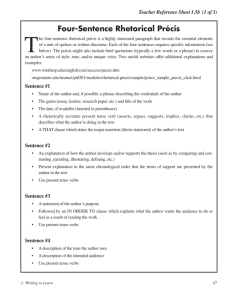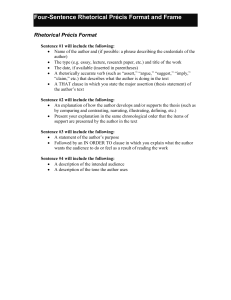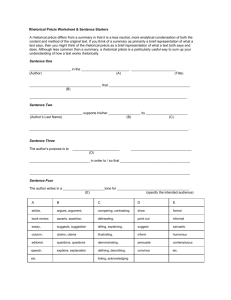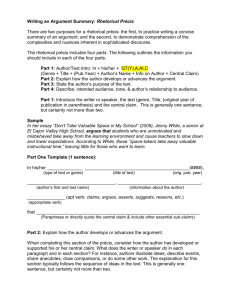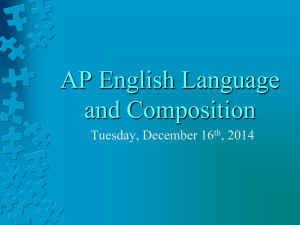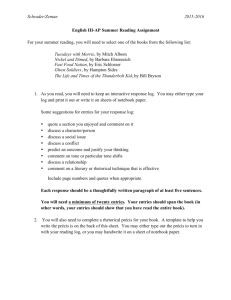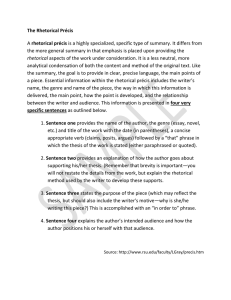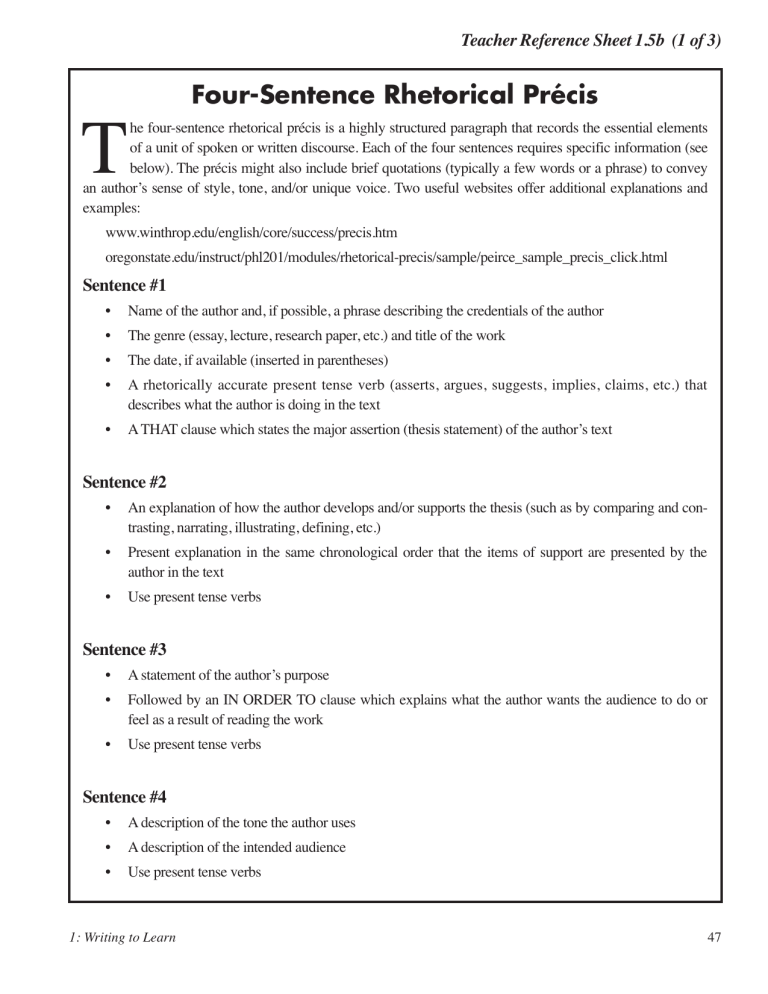
Teacher Reference Sheet 1.5b (1 of 3) Four-Sentence Rhetorical Précis T he four-sentence rhetorical précis is a highly structured paragraph that records the essential elements of a unit of spoken or written discourse. Each of the four sentences requires specific information (see below). The précis might also include brief quotations (typically a few words or a phrase) to convey an author’s sense of style, tone, and/or unique voice. Two useful websites offer additional explanations and examples: www.winthrop.edu/english/core/success/precis.htm oregonstate.edu/instruct/phl201/modules/rhetorical-precis/sample/peirce_sample_precis_click.html Sentence #1 • Name of the author and, if possible, a phrase describing the credentials of the author • The genre (essay, lecture, research paper, etc.) and title of the work • The date, if available (inserted in parentheses) • A rhetorically accurate present tense verb (asserts, argues, suggests, implies, claims, etc.) that describes what the author is doing in the text • A THAT clause which states the major assertion (thesis statement) of the author’s text Sentence #2 • An explanation of how the author develops and/or supports the thesis (such as by comparing and contrasting, narrating, illustrating, defining, etc.) • Present explanation in the same chronological order that the items of support are presented by the author in the text • Use present tense verbs Sentence #3 • A statement of the author’s purpose • Followed by an IN ORDER TO clause which explains what the author wants the audience to do or feel as a result of reading the work • Use present tense verbs Sentence #4 • A description of the tone the author uses • A description of the intended audience • Use present tense verbs 1: Writing to Learn 47 Teacher Reference Sheet 1.5b (2 of 3) Four-Sentence Rhetorical Précis Frame 1. ________________________________, __________________________ (author’s credentials—optional) (author’s first and last name) ________, in his/her ________________ , ______________________________________ ( ______________ ) , argues (or (genre) (title of text; date in parentheses) some other appropriate verb) that _______________________________________________________ (major assertion of author’s text) __________________________________________________________________________________ _________________________________________________________________________________ . 2. She/he supports her/his claim by first __________________________________________________ ___________________________________________________ , then __________________________ ___________________________________________________________________________________ ____________________________ , then _________________________________________________ _________________________________________________________ , and finally_______________ __________________________________________________________________________________. 3. _______________________ ’s purpose is to ____________________________________________ (author’s last name) (purpose) __________________________________________________________________________ in order to __________________________________________________________________________________ . (to accomplish what?) 4. She/he ___________________________ a(n) _____________________________________ tone for (verb: adopts, establishes, creates, etc.) (tone) __________________________________________________________________________________ . (intended audience). 48 High School Writing Teacher Guide Teacher Reference Sheet 1.5b (3 of 3) Four-Sentence Rhetorical Précis - A Sample Statesman and philosopher, Thomas Jefferson, in The Declaration of Independence (1776), argues that the God-given rights of life, liberty, and the pursuit of happiness entitle the colonists to freedom from the oppressive British government and guarantee them the right to declare independence. He supports his claim by first invoking the fact of our inalienable rights, then he establishes the circumstances under which a people can throw off an oppressive government; he next proceeds to show that these circumstances have been created by King George III whose oppressive rule now forces the colonists to the separation. The purpose of this document is to convince all readers of the necessity to officially declare independence from Great Britain in order to establish a separate independent nation, the United States of America. Jefferson establishes a passionate and challenging tone for a worldwide audience, but particularly the British and King George III. 1: Writing to Learn 49 “I taught English as a first year teacher last year and even with AVID in its initial year (at our school), I could distinguish between the ‘regular’ and AVID students quite easily by their behavior and commitment to success.” —Maggie Hallam, Adams City High School, Denver, CO 50
